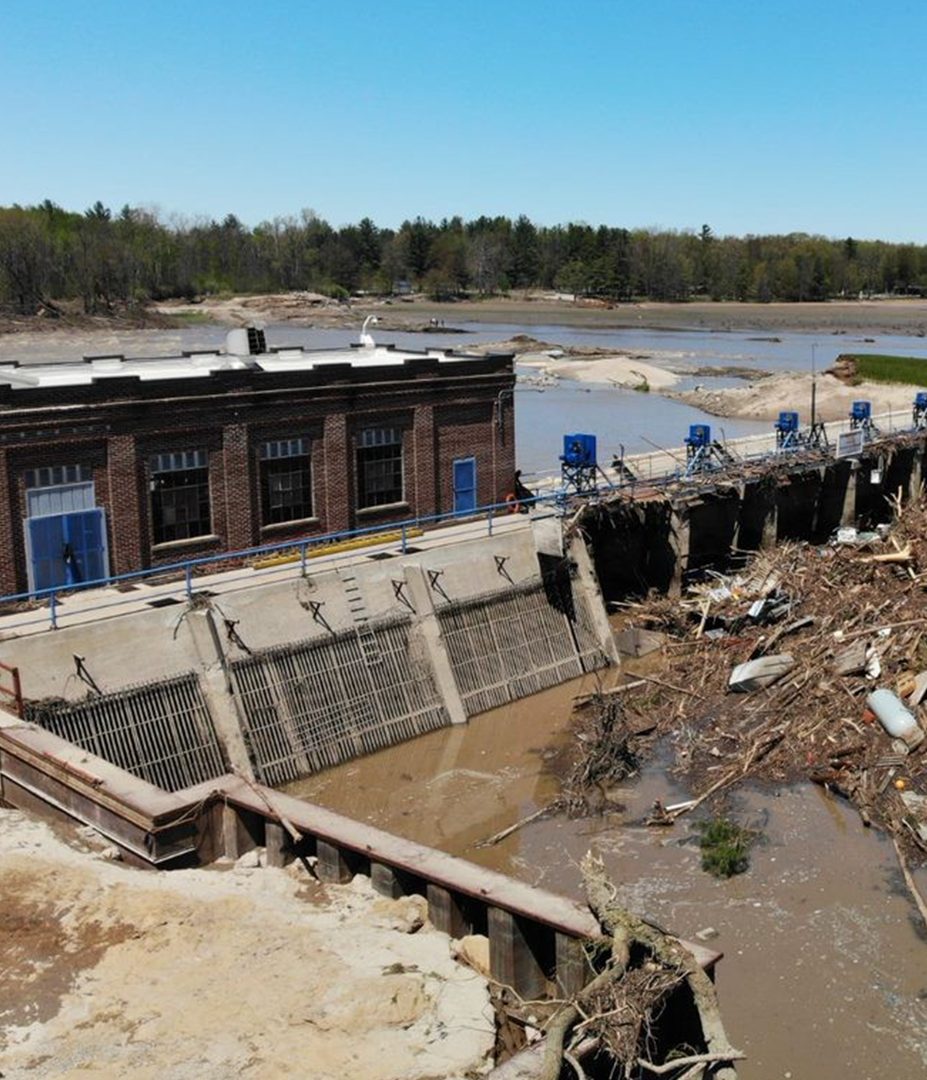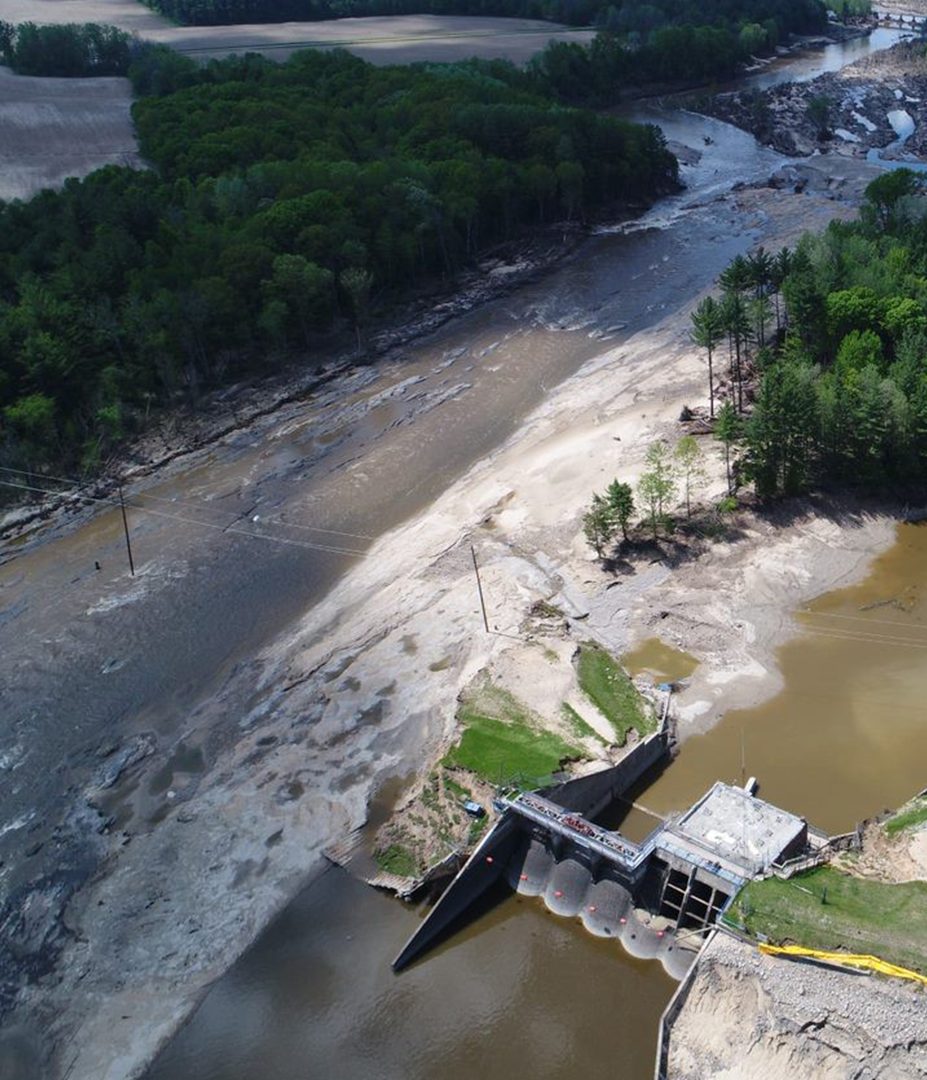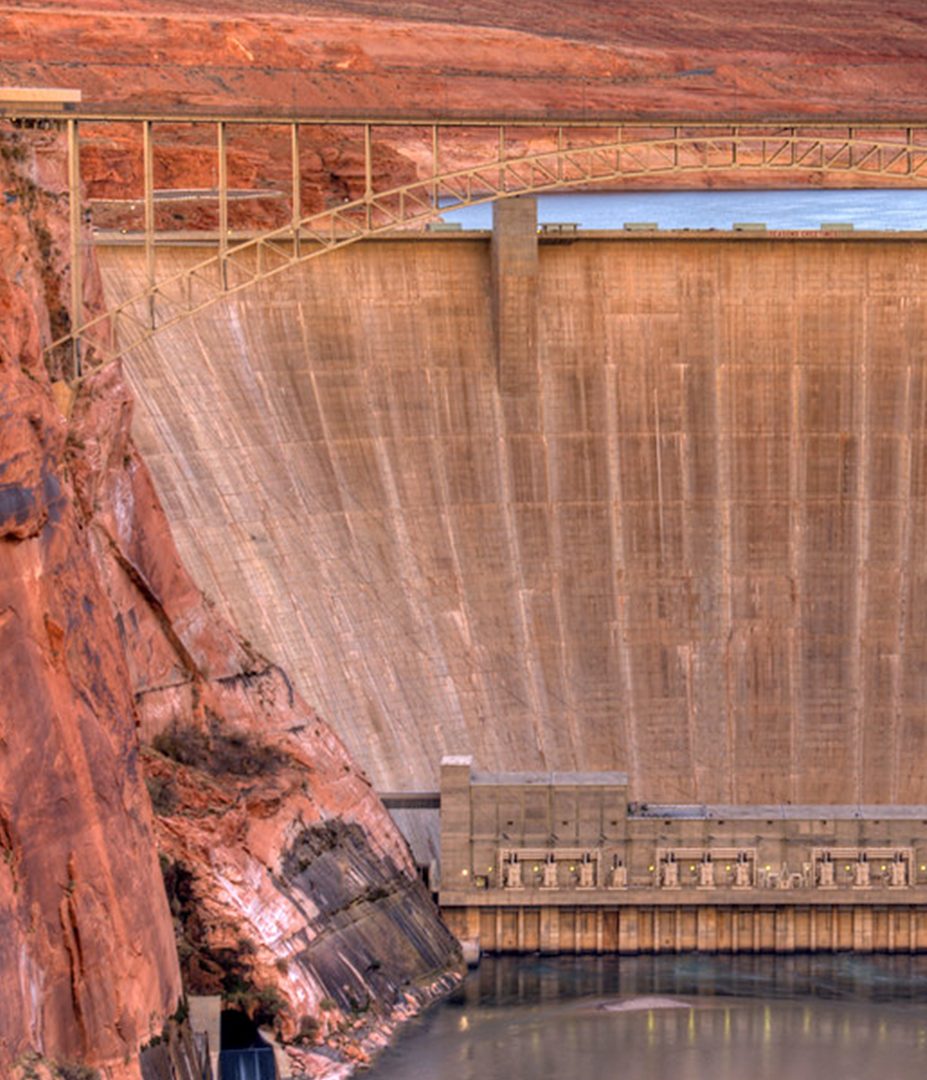Georgia, Inland Waterways, National Category
Startup Uses Drone for Cleaning Water, Collecting Data


There are over 91,000 dams in the country that serve many purposes. Dams are classified by hazard potential. A high-hazard-potential rating does not imply that a dam has an increased risk for failure; it simply means that if failure were to occur, the resulting consequences would likely be a direct loss of human life and extensive property damage. Over the last 20 years, the number of high-hazard-potential dams has more than doubled as development steadily encroaches on once-rural dams and reservoirs. Although the number of high-hazard-potential dams has increased, the overall percentage of these dams protected by an Emergency Action Plan has increased as well. As of 2018, 81% of such dams had a plan on file, up 5% from 2015. Unfortunately, due to the lack of investment, the Association of State Dam Safety Officials estimates the number of deficient high-hazard-potential dams now exceeds 2,300. Meanwhile, approximately 3% of dams supply households and businesses with hydroelectric power, and many of these dams are privately owned by utilities and follow a rigorous operations and maintenance schedule.
Download Report
is 57 years.
over half (56.4%) of U.S. dams were privately owned.
of high-hazard-potential dams have emergency action plans.

Dams are present in all 50 states, serving a wide range of daily needs, such as water storage, irrigation, hydropower, mining, flood control, and recreation. The public most commonly thinks of engineering marvels like the Hoover Dam in Nevada, which provides water supply and hydroelectric power to Arizona, Nevada, and California. However, only 3% of dams are currently a source of hydroelectric energy.
Without specific funding programs, many dam owners cite lack of funding as the reason maintenance and upgrades are deferred. As of 2019, over half (56.4%) of U.S. dams were privately owned. The remaining dams are divided among a variety of owners; among them, 20% are local, 4.7% are federal, while an almost equal figure, 4.8%, are owned by states. It should be noted that 42% of federal dams fall under the purview of the U.S. Army Corps of Engineers (USACE) or the Bureau of Reclamation. The smallest share of dams (2.4%) are held by public utilities. Identifying dam owners is critical as funding rehabilitation and repair falls to them.

Dam failures not only put the public at risk, but they can also cost our economy billions of dollars in damages. Failure includes more than the dam’s damage, but can negatively impact many other infrastructure systems, such as roads, bridges, and water systems. When a dam fails, resources must be devoted to the prevention and treatment of public health risks as well as the resulting structural consequences.
In some areas, engineers, dam owners, regulators, and emergency management professionals are making efforts to engage communities near dams to raise awareness of the potential damage from failure. By expanding community collaboration, stakeholders can support land-use decisions, emergency action planning, and maintenance and rehabilitation funding, which all help reduce community risk and improve resilience in the long term.
Further increasing resilience of dams throughout the country is the shift toward a risk-based decision-making process for the design, rehabilitation, and operation of dams. This risk-based approach is innovatively coupled with web-based tools developed by federal agencies, like RiskMAP, DamWatch, and ShakeCast, that aid dam owners in identifying, mitigating, and reacting to potential structural and downstream risks.
RiskMAP, or Risk Mapping, Assessment, and Planning, is a FEMA program that provides communities with flood information and tools they can use to enhance their mitigation plans to protect public safety. The program looks at the lifetime of the asset and identifies other risks within the watershed, which could include dam failures. Dam Watch, a web-based application, provides real-time monitoring of rainfall, snowmelt, streamflow, and seismic events that could pose potential threats to dam safety. With its ability to alert essential staff of critical events, Dam Watch can help ensure Emergency Action Plans and related procedures are executed in a timely fashion. Finally, the ShakeCast system was developed by the U.S. Geological Survey (USGS) as a means of assisting in post-earthquake disaster management, which among other things can include notifying dam owners of potential seismic risks. An extension of the USGS tool, ShakeCast can provide real-time information that enables decision-makers to take quick action to secure the asset and protect public health and safety.
Fully fund the national dam rehabilitation and repair funding program at its full appropriation of $40 million to cost-share repairs for publicly owned, non-federal, high-hazard-potential dams.
Develop emergency action plans for every high-hazard-potential dam by 2025.
Implement a national public awareness campaign to educate individuals about high-hazard-potential dams, specifically ensuring the public has a better understanding of the dam rating system and how we determine condition as well as the location and condition of dams in their area.
Increase state funding to their respective dam safety programs, including adequate staffing of state dam safety offices. Ensure all 50 states have dam safety programs.
Encourage state and federal agencies to meet reporting deadlines to ensure that adequate data on dams are available for policymakers to facilitate decision-making on funding and to the general public to promote public awareness.
Require federal agencies that own, operate, or regulate dams to meet the standards of Federal Guidelines for Dam Safety.
Encourage improved land use planning at the local level so that communication about how dams affect local areas is more accurately known and considered in future planning.
A formal document that identifies potential emergency conditions at a dam and specifies preplanned actions to be followed to minimize property damage and loss of life should those conditions occur. The EAP contains procedures and information to assist the dam owner in issuing early warning and notification messages to responsible downstream emergency management authorities. It also should include inundation maps to show the emergency management authorities the critical areas for action in case of an emergency.
Party or parties responsible for the safety and liability of the dam and for financing its upkeep, upgrade, and repair.
Party or parties responsible for dam safety regulation including the safety evaluations of existing dams, review of plans and specifications for dam construction and major repair work, periodic inspections of construction work on new and existing dams, and review and approval of emergency action plans.
A dam in which failure or mis-operation is expected to result in loss of life and may also cause significant economic losses, including damages to downstream property or critical infrastructure, environmental damage, or disruption of lifeline facilities.
A dam in which the failure or mis-operation is not expected to cause loss of life, but results in significant economic losses, including damages to downstream property, critical infrastructure, environmental damage, or disruption of lifeline facilities.
A dam located in a rural or agricultural area where failure would not only cause the loss of the dam itself but may cause minor damage to nonresidential and normally unoccupied buildings, or rural or agricultural land.
U.S. Army Corps of Engineers, “National Inventory of Dams,” 2020 partial update.
U.S. Army Corps of Engineers, “National Inventory of Dams,” 2020 partial update.
Association of State Dam Safety Officials, “State Performance and Current Issues,” Risk of Failure.
U.S. Army Corps of Engineers, “National Inventory of Dams,” 2020 partial update.
U.S. Army Corps of Engineers, “National Inventory of Dams,” 2020 partial update.
Congressional Research Service, “Dam Safety Overview and the Federal Role,” page 8, October 24, 2019.
U.S. Army Corps of Engineers, “National Inventory of Dams,” 2020 partial update.
Association of State Dam Safety Officials, “State Performance and Current Issues,” Graph 3.
Congressional Research Service, “Dam Safety Overview and the Federal Role,” page 16, October 24, 2019.
Federal Emergency Management Agency, “Dam Ownership in the United States.” https://www.fema.gov/dam-
Congressional Research Service, “Dam Safety Overview and the Federal Role,” page 18, October 24, 2019.
Association of State Dam Safety Officials, The Cost of Rehabilitating Our Nation’s Dams: A Methodology, Estimate & Proposed Funding Mechanisms,” December 2002, updated 2019. (Online resource no longer available)
Association of State Dam Safety Officials, The Cost of Rehabilitating Our Nation’s Dams: A Methodology, Estimate & Proposed Funding Mechanisms,” December 2002, updated 2019.
Congressional Research Service, “Dam Safety Overview and the Federal Role,” page 34, October 24, 2019.
Federal Emergency Management Agency, “HHPDR Factsheet,” May 2020. https://www.fema.gov/sites/
HHPDR Project Spreadsheet shared by ASDSO.
Association of State Dam Safety Officials, “State Performance and Current Issues,” Emergency Action Plans (EAPs) for High-Hazard Potential Dams.
Association of State Dam Safety Officials, “State Performance and Current Issues,” Emergency Action Plans (EAPs) for High-Hazard Potential Dams.
Association of State Dam Safety Officials, “State Performance and Current Issues,” Inspections of High-Hazard Potential Dams.
Congressional Research Service, “Dam Safety Overview and the Federal Role,” page 16, October 24, 2019.
Association of State Dam Safety Officials, “State Performance and Current Issues,” Graph 3.
Association of State Dam Safety Officials, “State Performance and Current Issues,” Graph 5.
Congressional Research Service, “Dam Safety Overview and the Federal Role,” pages 12-13, October 24, 2019.
Federal Emergency Management Agency, “RiskMap Factsheet.” https://www.fema.gov/flood-
U.S. Geological Survey, “ShakeCast.”
